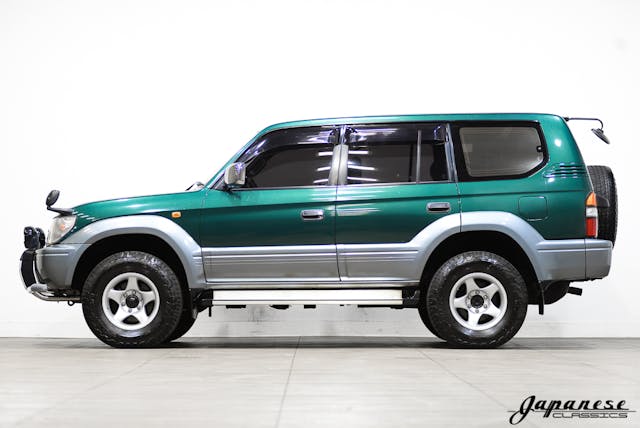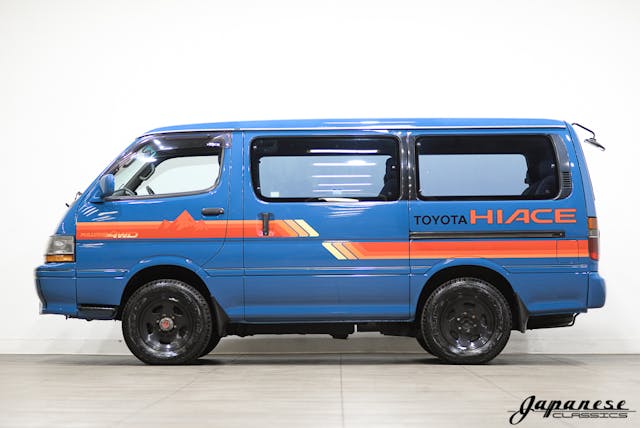Imports of classics picked up during the pandemic

From silicon chips to the Ever Given to Nord Stream, the last couple years have made us all realize how important the international supply chain is to our daily lives. With reports about container prices skyrocketing, we decided to take a look at how the global classic car trade has been affected.
As you might expect, shipping of lightly-used vehicles to the United States—often belonging of U.S. service members—decreased during the pandemic. But much to our surprise, importing of classic cars at least 25 years old increased since 2020, even outpacing newer vehicles for the first time. (Keep in mind, classic or used vehicles imported via Mexico or Canada would not show up in shipping data.)
Dan Weinberger, general manager at Japanese Classics in Richmond, Virginia, has an inside perspective: Because his company and many other importers don't use containers but instead drive the cars on and off the ship, they have been largely unaffected by the container shortage. In fact, the lack of new vehicle production from Covid shutdowns and the chip shortage has made vessel space more available. So in a way, the shipping crisis has actually made things easier for those looking for a classic from overseas.
The deranged used-car market could also play a role in the increased demand for imports, especially from Japan, where the most popular models are practical and affordable.
Many of the most popular Japanese imports are cars and trucks that had a nearly identical American-market version. Why spend the time and money to import something that looks the same but with the steering wheel on the wrong side? "They did come with a lot better options and drivetrains," Weinberger explains. Also, the fact that glass and body panels are shared with their American counterparts makes ownership more seamless. He continued, "It's a smart buy, comparably mile-for-mile. See [how much] a V-6 4Runner with less than 100,000 miles sells for in the U.S. at dealers and see where we sell ours. Any competitive shopper may see some value there."
Even imports that never made it stateside often share many components with North American vehicles, which makes them relatively easy to maintain. This is one of the reasons the 90-Series Toyota Land Cruiser has become a popular item in Japanese Classics' inventory, like this 1996 Toyota J95 Land Cruiser, which shares its drivetrain and underpinnings with its contemporary 4Runner.

Like we've seen in the classic car market as a whole, vehicle preference among imports is shifting toward "practical classics". Import performance cars like the Nissan Skyline have been dropping in popularity since their peak in early 2021, with off-road capable trucks and vans becoming the most popular vehicle group.
The variety of Land Cruiser drivetrains and body styles, along with Toyota's legendary reputation for reliability off-road, is helping push the model to become the most popular 4x4 import. A spot that the Land Rover Defender has held the last decade. The Land Cruiser is following in the footsteps of the Defender. When prices for the North American versions rise, the imports become a smart buy.
Wild prices for vintage SUVs in the United States, increased interest from the Gen–X collectors who grew up with these vehicles, and pandemic-inspired wanderlust all likely contribute to the surge in SUV imports. Weinberger adds that dealers like his could be "blamed" for fanning the flames of Land Cruiser demand. "I think dealerships can actually influence the type of cars that people find desirable. It’s not just a pull business, it’s a push business too. We’ve been doing sports cars and luxury cars for 11 years and only over the past 3 years have we made a consistent effort to diversify product. Take the 70-series Land Cruiser. Two years ago we didn’t have anybody looking for that car at all, we start selling them, other importers start jumping on it, now there’s exposure for the car and within 2 years you go from a $15K price point to a $30K price point."

Cult-classics like the Mitsubishi Delica are also on the rise. The two most popular 4x4 JDM vans are the Mitsubishi Delica and the variety of Toyota Vans in the "Ace" family. Van enthusiasts will remember a time when a Delica could be had for $10K. No more. The Toyota has taken its place as the more affordable option and in turn has become the preferred import.

Vanlife has been popular for nearly a decade with every tech nomad clamoring for a $100K Mercedes Sprinter build. But there is a plethora of JDM adventure vans available for nearly 1/10th the price that are more reliable, cheaper, and just as capable. Seems like a no-brainer—at least given the mind-bending economics of today's used- and classic-car markets.

